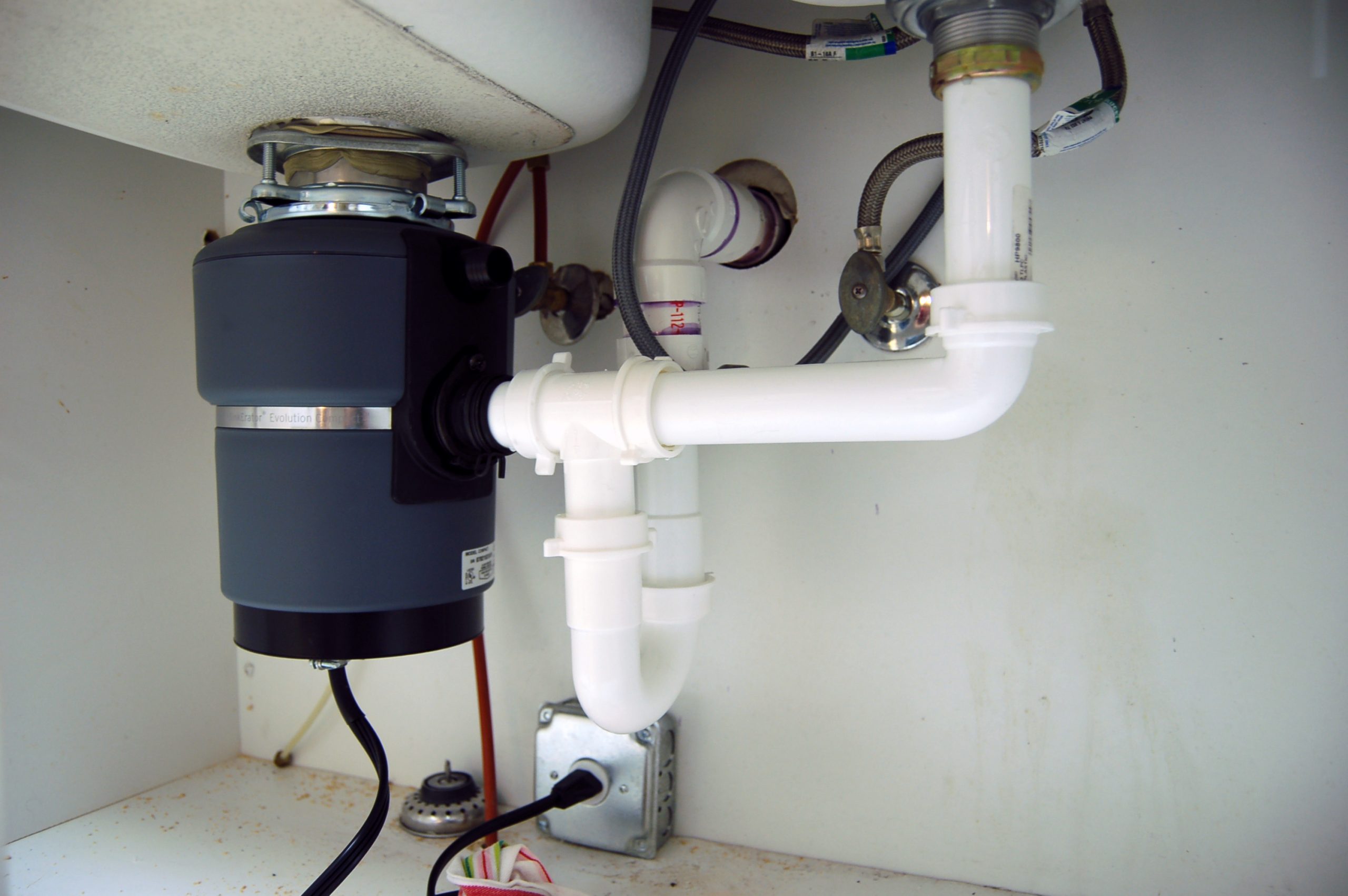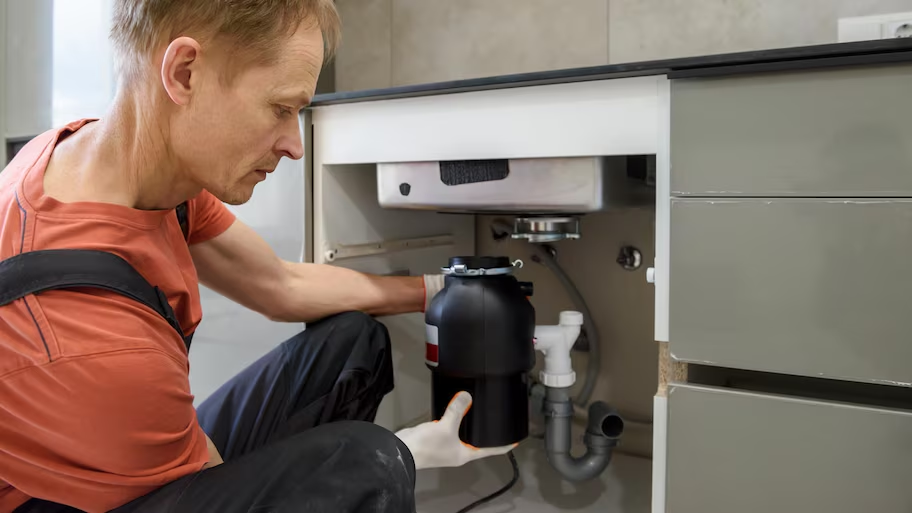Easy-to-Follow Techniques for Repairing a Leaky Garbage Disposal
Easy-to-Follow Techniques for Repairing a Leaky Garbage Disposal
Blog Article
The article which follows in relation to Why Is My Garbage Disposal Leaking From the Bottom? is rather enjoyable. You should take a look.

Garbage disposals are important cooking area home appliances that assist in throwing away food waste successfully. Nevertheless, a dripping garbage disposal can be an aggravating and messy trouble to deal with. Thankfully, many leakages can be dealt with easily with a few easy actions. In this short article, we will certainly talk about exactly how to deal with a dripping garbage disposal effectively.
Intro
Garbage disposals are mounted under kitchen sinks and are developed to shred food waste right into smaller items, allowing it to go through the pipes system easily. While these gadgets are normally reputable, leaks can occur in time because of deterioration, loosened links, or damages to the device.
Usual Reasons For Leaks in Trash Disposals
Worn Seals and Gaskets
Seals and gaskets play a vital duty in protecting against water from dripping out of the waste disposal unit. With time, these elements can weaken, resulting in leakages around the disposal device.
Loose Links
The connections in between the waste disposal unit and the pipes system can end up being loose in time, triggering water to leakage out throughout operation.
Cracks or Openings in the Disposal System
Physical damages to the garbage disposal, such as cracks or openings in the real estate, can likewise lead to leaks.
Identifying the Resource of the Leak
Prior to attempting to fix a dripping garbage disposal, it is vital to recognize the source of the leakage. This can usually be done through visual examination or by carrying out straightforward tests.
Visual Evaluation
Evaluate the waste disposal unit unit thoroughly for any indicators of water leakage. Pay attention to areas around seals, gaskets, and connection factors.
Testing for Leaks
One method to test for leakages is by running water via the disposal system and looking for any visible signs of leak.
Devices and Materials Needed for Fixing a Leaking Garbage Disposal
Before beginning the repair service procedure, gather the required tools and materials, consisting of a screwdriver, flexible wrench, plumbing professional's putty, substitute seals or gaskets, and epoxy or patching material for repairing splits or openings.
Step-by-Step Overview to Taking Care Of a Leaking Waste Disposal Unit
Shut off the Power
Before trying any type of repairs, make certain that the power to the garbage disposal unit is turned off to avoid the risk of electrical shock.
Locate the Leakage
Identify the precise location of the leak and establish the reason.
Tighten Links
Use a wrench to tighten up any kind of loose links in between the disposal unit and the plumbing system.
Change Seals or Gaskets
If the leak is because of worn seals or gaskets, eliminate the old components and change them with new ones.
Patching Fractures or Openings
For splits or openings in the disposal unit, use epoxy or a suitable patching material to secure the broken location.
Evaluating the Garbage Disposal After Repair Service
Once the repair is total, examine the waste disposal unit by running water via it to make certain that the leakage has actually been dealt with.
Preventive Maintenance Tips to Avoid Future Leaks
To prevent future leakages, it is essential to perform normal upkeep on your garbage disposal. This includes maintaining it tidy, avoiding placing non-food products or hard items down the disposal, and occasionally looking for leakages or various other problems.
Conclusion
Finally, taking care of a leaking waste disposal unit is a relatively simple procedure that can be completed with standard tools and products. By complying with the actions outlined in this post and exercising preventive maintenance, you can maintain your garbage disposal in good working problem and avoid pricey repairs in the future.
What to Do About a Leaking Garbage Disposal
A leaking garbage disposal often goes unnoticed until you confront a sopping cabinet, a foul-smelling puddle, or an audible drip-drip-drip from the unit. The fix can be frustrating, too, because the leak can stem from a number of components in the system. Fortunately, with a little sleuthing, you can zero in on the leak and—depending on the exact location—stop the icky oozing and repair the component that caused it. Worst case scenario, if it turns out that the garbage disposal must be replaced, installing a new one is a reasonable do-it-yourself task for those with basic plumbing skills. Read on to keep the cash you’d otherwise hand over to a pro.
Prepare to find the leak
Prior to testing the garbage disposal for leaks, unplug it at the wall outlet and turn off the power from the breaker box to prevent electrical shock. Then insert a watertight sink stopper into your sink drain and wipe the unit dry with a clean cloth. In any handy container, mix a few drops of food coloring into a few cups of water, and pour the dyed water onto the sink stopper to help you locate the leak.
Investigate the source
the top, where the disposal meets the sink drain the side, where the dishwasher hose or main drain pipe connects to the disposal or the bottom of the unit Inspect each of these locations while gliding a light-colored rag over the unit; the dyed water will readily show on the rag and reveal the location of the leak. If a leak isn’t immediately apparent, remove the sink stopper and pour a few more cups of dyed water down the sink drain, then check for leaks again. Leaks near the top of the unit are more likely to show themselves while the sink is plugged, while side and bottom leaks are more noticeable while the sink is unplugged.
The metal sink flange that sits directly inside the sink drain is typically sealed around the top with plumber’s putty (a clay-like sealant) and then secured from under the sink with bolts. If the plumber’s putty deteriorates, or the bolts loosen, the flange can no longer form a watertight seal between the sink drain and the disposal—which could cause a leak at the top of the unit.
To reseal the leaky flange, you must first detach the garbage disposal. Start by loosening the screws securing the main drain pipe to the disposal, then loosen the screws in the metal clamp securing the dishwasher hose to the disposal and detach the drain pipe and dishwasher hose from the disposal. Loosen the screws in the mounting ring that connects the disposal to the metal mounting assembly beneath the sink, then pull down the disposal and carefully set it on a clean, dry surface. Loosen the bolts in the mounting assembly with a wrench, then pull down the mounting assembly and set it near the disposal.

I'm very interested by The Handy Guide To Fixing Your Garbage Disposal Leaking and I'm hoping you enjoyed our blog post. Please set aside a second to promote this page if you enjoyed it. I cherish reading our article about Tips on Fixing a Leaking Garbage Disposal.
Book Report this page